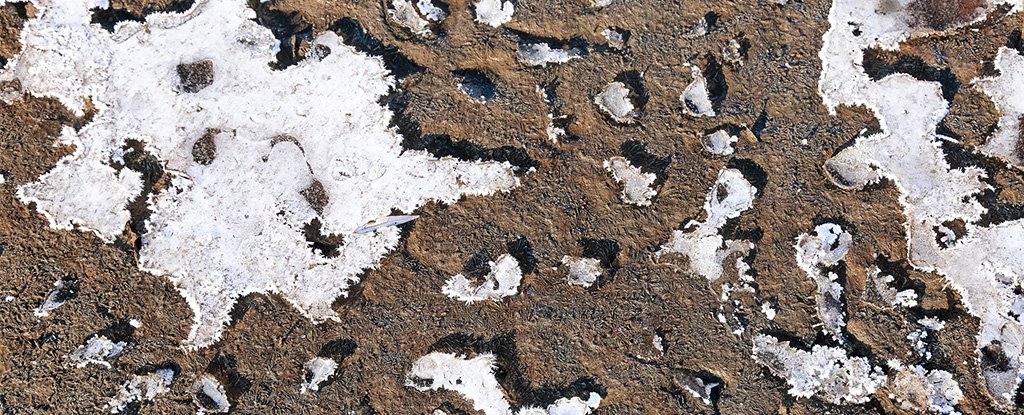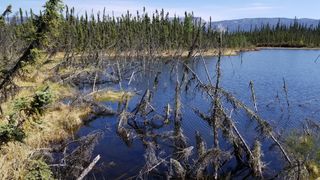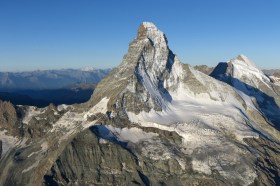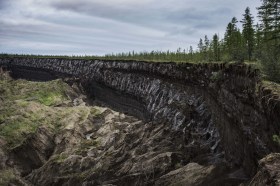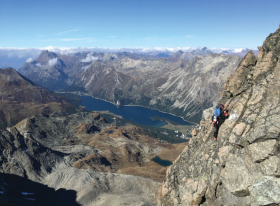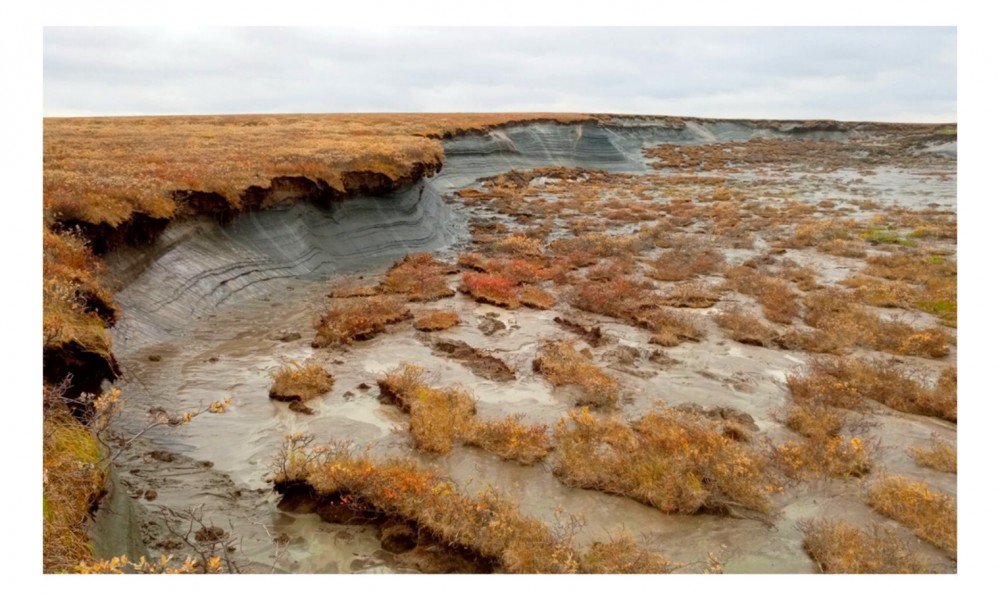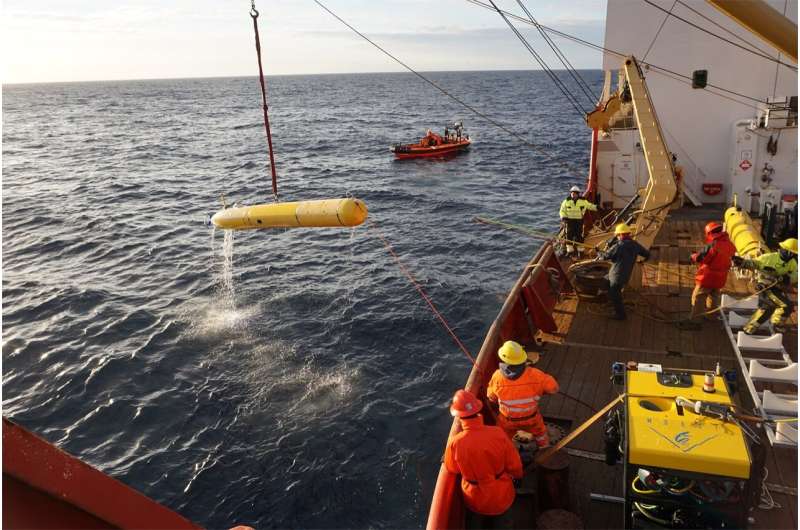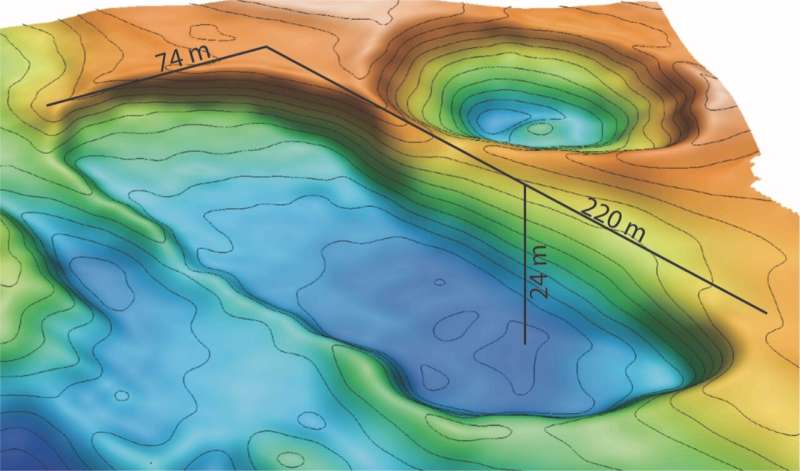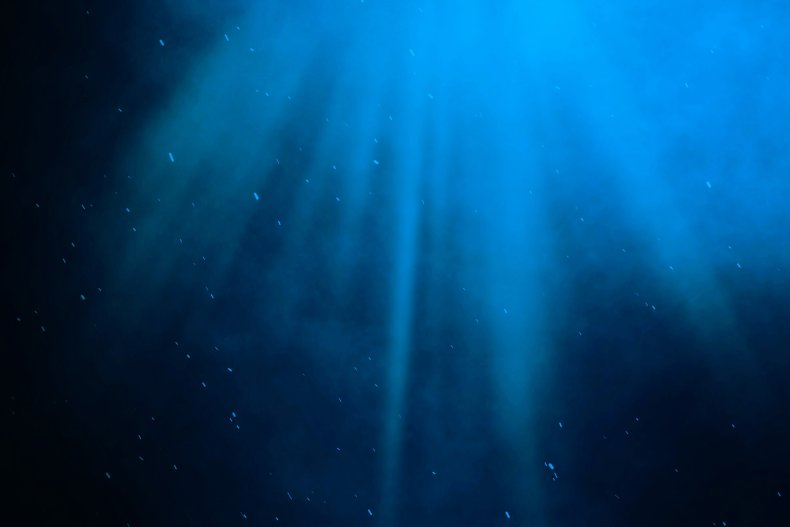When Russian settlers began building in what is now Yakutsk in the 17th century, they placed homes on wooden platforms to insulate the permafrost below from the warmth of habitation. Centuries later, Soviet planners employed a modernised version of this technique, erecting cities like Yakutsk and Norilsk on concrete piles to elevate buildings above the permafrost and prevent structural collapse.
This allowed major urban centres to emerge in some of the world’s harshest climates. In winter, temperatures in Yakutsk routinely fall below -50°C; it is the coldest major urban area in the world. Despite this, the city, which lies 450 km south of the Arctic Circle, has thrived. It is now home to over 300,000 people and is the largest city in the world built entirely on continuous permafrost.
Yet climate change is rapidly altering the physical foundations on which these cities rest. Rising global temperatures, especially in the Arctic where warming occurs at more than twice the global average, are causing the once-permanent permafrost to thaw.
Thawing permafrost threatens the structural integrity of homes, roads and vital infrastructure. Pipelines rupture, buildings crack, and entire settlements begin to slump into the ground. The costs – financial, social and ecological – are mounting.
According to data published by Nordic research institute Nordregio, as of 2017 nearly 5mn people lived in permafrost zones in and around the Arctic Circle, including in Canada, Alaska and much of northeast Siberia. These include major urban centres like Norilsk and Yakutsk, as well as dozens of smaller towns. Indigenous communities in these regions, whose traditional ways of life depend on frozen ground for stability and seasonal predictability, are among those most affected.
The Arctic warms
Permafrost is soil that remains frozen for at least two consecutive years. In many Arctic regions, it has remained frozen for tens or even hundreds of thousands of years. But since the early 2000s, feedback loops of shrinking sea ice, snow loss and warming soils have triggered faster Arctic warming. In the winter of 2024-25, the Arctic experienced record high temperatures as warming accelerated again and is now running seven times faster in the North Barents Sea than the rest of the world, researchers have found, as bne IntelliNews reported.
This acceleration is already having measurable effects. The UN Environment Programme in 2019 listed permafrost thaw as one of the top 10 emerging environmental threats. In 2000-19, glaciers lost around 267bn tonnes of ice every year, according to a study published by Nature. On March 22, Arctic sea ice reached its lowest maximum extent since satellite records began 47 years ago. Beyond the Arctic, the Himalayas, the Alps and other high mountain ranges are seeing dramatic glacial retreat, with projections from the International Centre for Integrated Mountain Development (ICIMOD) showing at least one-third of Himalayan ice could vanish by 2100.
Russia’s Arctic regions are warming even more rapidly. Since 1970, northern Russia has seen temperatures rise by over 3°C – nearly triple the global average. In 2020, the Siberian town of Verkhoyansk registered 38°C, the highest temperature ever recorded in the Arctic.
Even under moderate emissions scenarios, thawing will continue. According to Nordregio, the number of people living on permafrost could shrink from 4.94mn in 2017 to 1.7mn by 2050 – less because of mass migration, than because the land itself will no longer be frozen. The number of affected settlements could fall from 1,162 to 628 under a moderate emissions scenario.
Russia’s industrial north
The problem is especially acute in Russia, which has the world’s largest population living on permafrost. Nearly two-thirds of Russian territory is underlain by frozen soil. “Russia and Canada are the two countries in the Arctic most affected by melting permafrost because large proportions of their territories are underlain by frozen soil. Nearly two-thirds of Russia is underlain by permafrost, while half of Canada is,” said Mia Bennett, associate professor at the University of Washington.
“Canada has dozens of small settlements underlain by permafrost, but only Russia, as the most industrialised and urbanised country in the Arctic, has cities with hundreds of thousands of people, which have been constructed atop permafrost," Bennett told bne IntelliNews. Those cities are Norilsk, a city built up around an enormous nickel mine, and Yakutsk, the capital of the Sakha Republic. Other smaller cities like Vorkuta, whose population is nearly equivalent to that of all of Greenland, also sit on permafrost.”
Yakutsk, the capital of the Sakha Republic – a vast, resource-rich region comprising a fifth of Russian territory – has continued to grow, fuelled by mining and buoyed by its role as a scientific and cultural hub. But the risks are rising. As permafrost thaws, the delicate balance that allowed these cities to flourish is beginning to unravel. Without drastic action to slow emissions and adapt infrastructure, the future of life on the thawing tundra looks increasingly uncertain.
Buildings crack, roads buckle
The effects of thawing permafrost are already visible across the Russian Arctic. In Yakutsk, Norilsk and other cities built on what was once permanently frozen ground, cracks are appearing in buildings that have stood for decades, roads are buckling and sinkholes are opening up beneath once-stable infrastructure.
“As global temperatures rise, Arctic warming is affecting permafrost thaw and damaging infrastructure in Arctic cities,” Pavel Devyatkin, senior associate at The Arctic Institute, told bne IntelliNews by email. “In the Russian Arctic city of Norilsk, the subsidence of permafrost has caused buildings to sink or collapse.”
In response, authorities have allocated funds to artificially cool building foundations in Norilsk in an attempt to slow the melt and protect infrastructure. But such efforts are only a stopgap.
Aside from the damage to buildings, Norilsk, the largest Arctic city in Russia, has already suffered one of the region’s worst environmental disasters when thawing ground contributed to the 2020 spill of 20,000 tonnes of diesel fuel on the Taymyr peninsula. The accident, which turned the Ambarnaya river red, was compared by Greenpeace to the 1989 Exxon Valdez oil spill. Satellite footage showed the permafrost beneath the fuel tank had been subsiding, though metals major Norilsk Nickel was also accused of negligence by watchdog Rostekhnadzor.
Beyond the cities, the landscape is transforming. Lakes in permafrost regions are merging into each other, giant sinkholes are appearing, and land is being lost of the Arctic coastlines year after year. In Alaska, the ground beneath the runway at Nome airport, a vital regional link, has thawed, demanding costly repairs. In Norway’s Spitsbergen, hundreds of homes have been destroyed as the soil shifts beneath them.
“In all of these locations, hundreds of buildings built in previous decades, when temperatures were significantly colder and permafrost more reliably frozen, have been damaged and deformed by thawing permafrost. The slumping ground leads their foundations to crumble and crack,” said Bennett. “Many of these buildings have had to be abandoned. Infrastructure outside of cities is also threatened, from roads to runways and military bases.”
Infrastructure at risk
By 2050, thawing permafrost could damage 20% of Russia’s commercial and industrial buildings, 19% of critical infrastructure valued at $84.4bn, and over half of residential properties worth $20.7bn. The cost of mitigation could range from 0.1% to more than 3% of Russia’s GDP, depending on climate outcomes.
One study using future climate scenarios projected that by mid-century, up to 44% of Arctic roads, 34% of railways, and 17% of buildings could be affected. Melting permafrost will damage 69% of the infrastructure in Russia’s frozen wastes by 2050, causing $275bn worth of damage and affecting the lives of over 3.6mn people, according to a study published in Nature.
Much of this infrastructure was designed with the assumption of stable ground – an assumption that no longer holds. This is a dangerous situation given that permafrost regions (especially in Russia) are not only home to oil and gas fields, but also nuclear power plants and hazardous waste sites. As permafrost loses its load-bearing capacity, the danger of structural failure grows.
Nearly 45% of Russia’s Arctic oil and gas fields lie in zones highly susceptible to thawing. Thousands of kilometres of key pipelines – including the ESPO oil line and future projects like Power of Siberia 2 – must traverse unstable terrain.
The Arctic also hides an industrial time bomb. Between 10,000 and 20,000 contaminated sites – abandoned bases, toxic sludge pits, mining waste – have relied on permafrost to contain their hazards, according to a paper published by the World Wildlife Fund (WWF). Thawing ground threatens to release these into surrounding ecosystems. In 2016, the Yamal Peninsula saw its first anthrax outbreak in 75 years, triggered by thawed reindeer carcasses. Over 2,000 reindeer died and dozens of human infections followed.
Transport disrupted
“We are getting collapses of building and bridges, problems with roads and railways. It’s a huge problem, costing millions of dollars, especially if you look at northwest Siberia, where there are already a lot of infrastructure problems. Thawing ice-rich soils in the far north threaten buildings, runways and infrastructure, causing ground shifts and major disruptions for residents,” said Brown University professor Amanda Lynch, in an interview with bne IntelliNews.
She warned that travel is becoming more difficult. Communities that rely on frozen rivers and lakes for winter transport find them increasingly unreliable. The ‘transition zone’ between frozen and unfrozen ground is expanding and moving north.
"At the moment it’s much easier to build an ice road and transport things in winter than to maintain roads and railways over discontinuous permafrost,” she said.
The most unstable zones are those that freeze and thaw each year, warping roads and buckling rail lines. “It’s very expensive to maintain land based transport infrastructure in that transition zone,” said Lynch.
“If you go to 2100 everything is thawed and it’s a much simpler problem. But from getting from here to there is very messy.”
In the meantime, many small settlements may become inaccessible – or at least it will become prohibitively expensive to maintain road connections, although those on navigable rivers will be easier to access.
Within the next 25 years, an estimated 3.3mn residents risk losing their homes as thawing permafrost undermines the ground beneath them. Across the region, roads, pipelines and buildings that serve more than 4mn people are being damaged. Indigenous communities, in particular, face the erosion not only of their homes but of traditions that have been shaped by the frozen ground for centuries.
In Russia, those displaced are often relocated to cities. There have also been relocations in Alaska and Canada. In Alaska, the village of Newtok has been eroding so rapidly that residents have begun a managed retreat to Mertarvik – making them one of the first Indigenous communities to complete a climate-forced relocation.
Yet relocation is a costly and deeply fraught solution, according to Lynch. “Governments and companies may think in terms of financial costs, but for Indigenous and traditional communities, there are values other than money to take into account,” she said.
Boomtowns
By contrast, some Arctic towns are booming as warming temperatures and technological advances open access to oil, gas and mineral reserves. Russia’s Arctic zone alone is believed to hold huge amounts of natural gas, oil, gold, silver and rare earths, making these territories critical to its economy. Gas companies Novatek and TotalEnergies are already operating (liquefied natural gas) LNG megaproject on the Yamal peninsula. In May this year, Russian oil company Rosneft took over Vostok Engineering LLC, which holds the license for Tomtor, one of the world's three biggest rare earth metal deposits, in Yakutia.
Economic activity in the Arctic has accelerated sharply. Until recently, most oil and gas extraction in the region took place onshore. Now, as summer sea ice declines – potentially vanishing entirely by 2035 – the Arctic is opening up to offshore development and expanded shipping. The US Geological Survey (USGS) estimates that 30% of the world’s undiscovered gas and 13% of undiscovered oil lie north of the Arctic Circle. The US Congressional Research Service puts the value of the region’s mineral wealth at around $1 trillion.
Infrastructure is following. In Alaska, work is under way to develop a new deepwater port at Nome, while Russia is investing into its ports at Murmansk, Arkhangelsk and Sabetta.
"In order to efficiently use the Trans-Arctic shipping route's potential and turn it into one of the main transport lanes in the country, it is important to ensure the development of port infrastructure along its entire length,” said Kremlin aide and Maritime Board chairman Nikolai Patrushev in April, as reported by Interfax.
Lynch noted that Russia is “massively” expanding its Arctic infrastructure. “Russia is leaning in, they see climate change as a net benefit. They are looking at a certain future of warm water deepwater ports.”
Between 2013 and 2024, the number of unique ships entering the Arctic Polar Code area shot up by 37%, according to the Protection of the Arctic Marine Environment Working Group of the Arctic Council. This included a variety of traffic including tourist vessels through the Northwest Passage, cargo movements through the ‘GIN’ corridor (Greenland, Iceland, Norway), and traffic along Russia’s Northern Sea Route.
Russia shifts to the East
Since the outbreak of war in Ukraine, Arctic shipping has increased further. “The volume of trade has increased. The war in Ukraine accelerated it because a lot of the shipping up there was always Russian. They operated year round, with a massive ice-breaker fleet,” said Lynch. “With sanctions, the trade relationship with China has become very important.” That has hiked demand on routes such as Subeta to Shanghai.
As Arctic activity intensifies, so too does the need to manage the risks posed by thawing permafrost. Engineering solutions are emerging to stabilise foundations and protect infrastructure.
“There are several engineering options for adapting to melting permafrost, including geotextiles, embankments, and other solutions that help to lower the temperatures and insulate the ground to prevent further melting,” says Bennett. “Some of these solutions are being developed outside of the Arctic in places like China, where 40% of the Tibetan Plateau is underlain by permafrost.”
According Devyatkin, these innovations include reinforced buildings, thick foam pads beneath roads, and expanded monitoring networks. "Governments are developing policies and regulations to work with construction on permafrost, such as mandates on permafrost-specific surveys and assessments before construction begins. There is a political will to address issue and this issue is especially getting more attention in regional and subnational governments.”
Russia is expected to unveil a strategy later this year to secure its Arctic infrastructure. But despite new engineering and regulatory approaches, experts warn that technical fixes are only part of the solution. The most effective way to mitigate permafrost damage is by curbing global warming.
There is also a dangerous feedback loop at play: as permafrost melts, it releases greenhouse gases – not just carbon dioxide but the much more damaging methane – accelerating global warming. The Intergovernmental Panel on Climate Change (IPCC) has warned that hundreds of gigatonnes of carbon dioxide could be released into the atmosphere as earth that has been frozen for hundreds of thousands of years thaws.
This article is part of a series on the impact of the Climate Crisis on major cities around the world.
The other articles in the series are:
Cities confront the rising tide of climate change
Taipei’s climate countdown
Accra under water
Jakarta’s sinking villages
Droughts and heatwaves grip Tehran
Two decades of change are testing Tokyo’s resilience
Rising seas threaten India’s coastal cities
Adapting the concrete heart of São Paulo to a changing climate
Mexico's Acapulco still rebuilding as climate disasters mount


